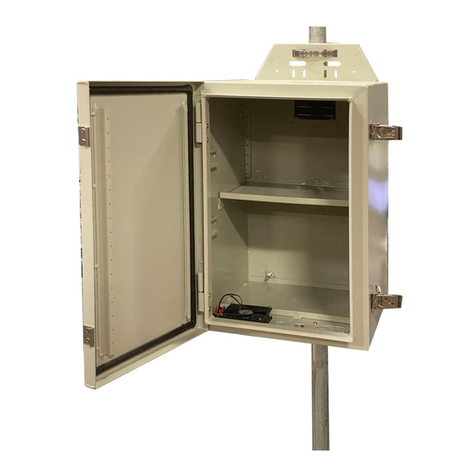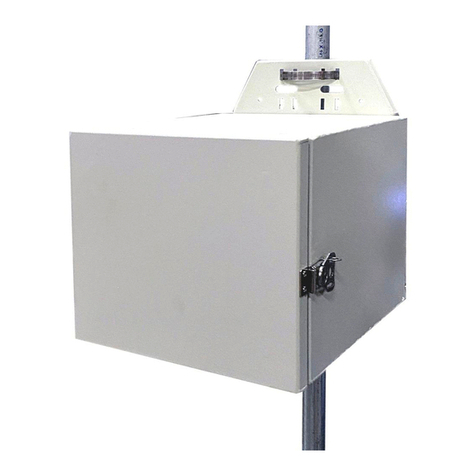7
9. WIND TURBINE: A wind turbine can
be added to this system at any time.
Wind Turbines are good sources of
power, often in times when the sun isn’t
shining, like on stormy days. We like to
think of a wind turbine as uptime insur-
ance. Tycon Solar™ offers small wind
turbines perfectly suited to augment the
RemotePro® systems. The Tycon®
BreezePro® (TPW-400DT-12/24) are
compatible wind turbines. To add a
wind turbine, it mounts to the top of a
41mm inside diameter pole. If the wind
turbines comes with an external control-
ler, You will need to mount the controller inside the enclosure and con-
nect the output of the controller to the batteries. The connection will be
in parallel with the existing solar controller connection.
10. POE SWITCH: Tycon Power® offers a
universal voltage 5port and 8port POE
switch if more than one device needs to
be powered from the battery system. The
TP-SSW5-NC, TP-SW5G-NC and TP-
SW8-NC offer the unique feature that the
voltage supplied to the switch is the POE
voltage sent to the devices. So 24VDC in
and you get 24VDC POE to the devices.
The operating voltage is 12V to 56VDC.
11. OTHER ACCESSORIES: Tycon® also offers a variety of voltage
conversion products to meet almost any need. Just visit tyconsys-
tems.com for more info.
Limited Warranty
The RemotePro® products are supplied with a limited 36 month warran-
ty which covers material and workmanship defects. This warranty does
not cover the following:
▫Parts requiring replacement due to improper installation, misuse,
poor site conditions, faulty power, etc.
▫Lightning or weather damage.
▫Physical damage to the external & internal parts.
▫Products that have been opened, altered, or defaced.
▫Water damage for units that were not mounted according to user
manual.
▫Usage other than in accordance with instructions and the normal
intended use.





























